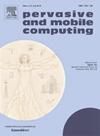Advancing user-space networking for DDS message-oriented middleware: Further extensions
IF 3.5
3区 计算机科学
Q2 COMPUTER SCIENCE, INFORMATION SYSTEMS
引用次数: 0
Abstract
Due to the flexibility it offers, publish–subscribe messaging middleware is a popular choice in Industrial IoT (IIoT) applications. The Data Distribution Service (DDS) is a widely used industry standard for these systems with a focus on versatility and extensibility, implemented by multiple vendors and present in myriad deployments across industries like aerospace, healthcare and industrial automation. However, many IoT scenarios require real-time capabilities for deployments with rigid timing, reliability and resource constraints, while publish–subscribe mechanisms currently rely on components that are not strictly real-time capable, such as the Linux networking stack, making it hard to provide robust performance guarantees without large safety margins.
In order to make publish–subscribe approaches viable and efficient also in such real-time scenarios, we introduce user-space DDS networking transport extensions, allowing us to fast-track the communication hot path by bypassing the Linux kernel. For this purpose, we extend the best-performing vendor implementation from a previous study, CycloneDDS, to include modules for two widespread user-space networking technologies, the Data Plane Development Kit (DPDK) and the eXpress Data Path (XDP). Building on this, we additionally offer two more extensions to the second most performant implementation FastDDS, also based on DPDK and XDP, and realize novel optimizations not present in the original extension implementations. We evaluate each extension’s performance benefits against four existing DDS implementations (OpenDDS, RTI Connext, FastDDS and CycloneDDS). The DPDK-based and XDP-based extensions offer a performance benefit of 31%–38% and 18%–22% reduced mean latency, respectively, as well as an increase in bandwidth and sample rate throughput of at least 160%, while reducing the latency bound by at least 93%, demonstrating the performance and dependability advantages of circumventing the kernel for real-time communications.
为DDS面向消息的中间件推进用户空间网络:进一步扩展
由于其提供的灵活性,发布-订阅消息传递中间件是工业物联网(IIoT)应用程序中的流行选择。数据分发服务(DDS)是这些系统广泛使用的行业标准,其重点是多功能性和可扩展性,由多个供应商实现,并在航空航天、医疗保健和工业自动化等行业的无数部署中出现。然而,许多物联网场景需要具有严格定时、可靠性和资源约束的部署的实时能力,而发布-订阅机制目前依赖于不具有严格实时能力的组件,例如Linux网络堆栈,因此在没有大安全裕度的情况下很难提供强大的性能保证。为了使发布-订阅方法在这种实时场景中也可行且高效,我们引入了用户空间DDS网络传输扩展,允许我们绕过Linux内核快速跟踪通信热路径。为此,我们从之前的研究中扩展了性能最好的供应商实现,CycloneDDS,包括两种广泛的用户空间网络技术的模块,数据平面开发工具包(DPDK)和快速数据路径(XDP)。在此基础上,我们还为性能第二高的实现FastDDS(同样基于DPDK和XDP)提供了另外两个扩展,并实现了原始扩展实现中没有的新优化。我们针对四种现有的DDS实现(OpenDDS、RTI Connext、FastDDS和CycloneDDS)评估了每个扩展的性能优势。基于dpdk和基于xdp的扩展分别提供了31%-38%和18%-22%的性能优势,平均延迟分别减少了31%-38%和18%-22%,带宽和采样率吞吐量增加了至少160%,同时延迟限制减少了至少93%,证明了绕过内核进行实时通信的性能和可靠性优势。
本文章由计算机程序翻译,如有差异,请以英文原文为准。
求助全文
约1分钟内获得全文
求助全文
来源期刊

Pervasive and Mobile Computing
COMPUTER SCIENCE, INFORMATION SYSTEMS-TELECOMMUNICATIONS
CiteScore
7.70
自引率
2.30%
发文量
80
审稿时长
68 days
期刊介绍:
As envisioned by Mark Weiser as early as 1991, pervasive computing systems and services have truly become integral parts of our daily lives. Tremendous developments in a multitude of technologies ranging from personalized and embedded smart devices (e.g., smartphones, sensors, wearables, IoTs, etc.) to ubiquitous connectivity, via a variety of wireless mobile communications and cognitive networking infrastructures, to advanced computing techniques (including edge, fog and cloud) and user-friendly middleware services and platforms have significantly contributed to the unprecedented advances in pervasive and mobile computing. Cutting-edge applications and paradigms have evolved, such as cyber-physical systems and smart environments (e.g., smart city, smart energy, smart transportation, smart healthcare, etc.) that also involve human in the loop through social interactions and participatory and/or mobile crowd sensing, for example. The goal of pervasive computing systems is to improve human experience and quality of life, without explicit awareness of the underlying communications and computing technologies.
The Pervasive and Mobile Computing Journal (PMC) is a high-impact, peer-reviewed technical journal that publishes high-quality scientific articles spanning theory and practice, and covering all aspects of pervasive and mobile computing and systems.
 求助内容:
求助内容: 应助结果提醒方式:
应助结果提醒方式:


